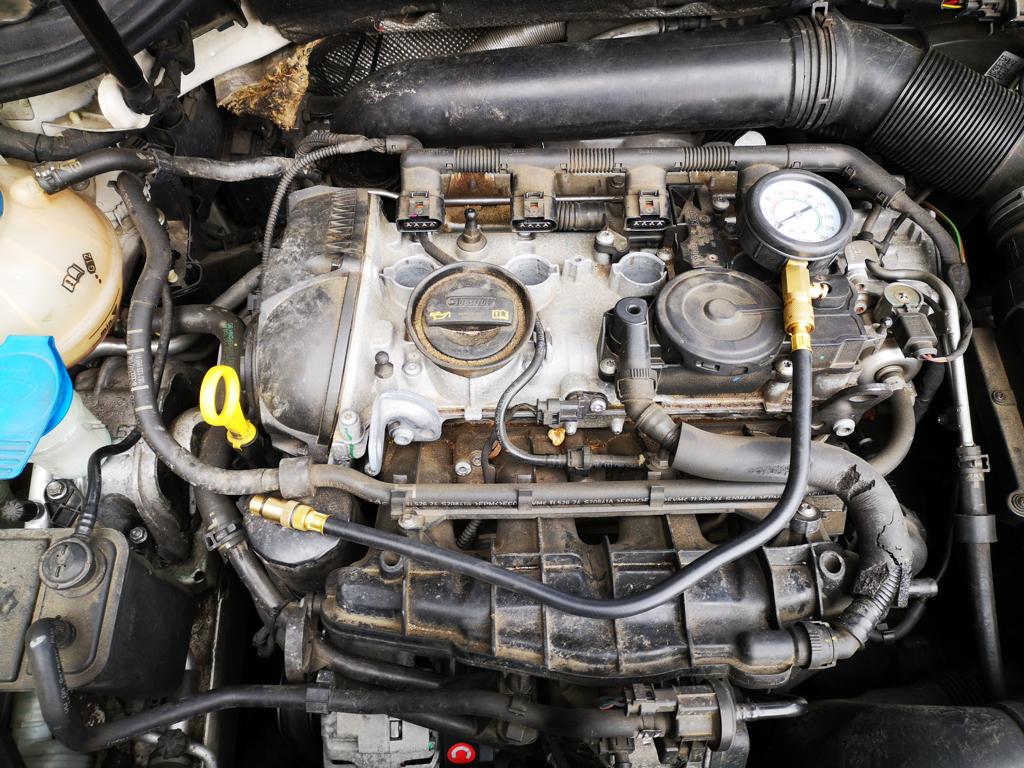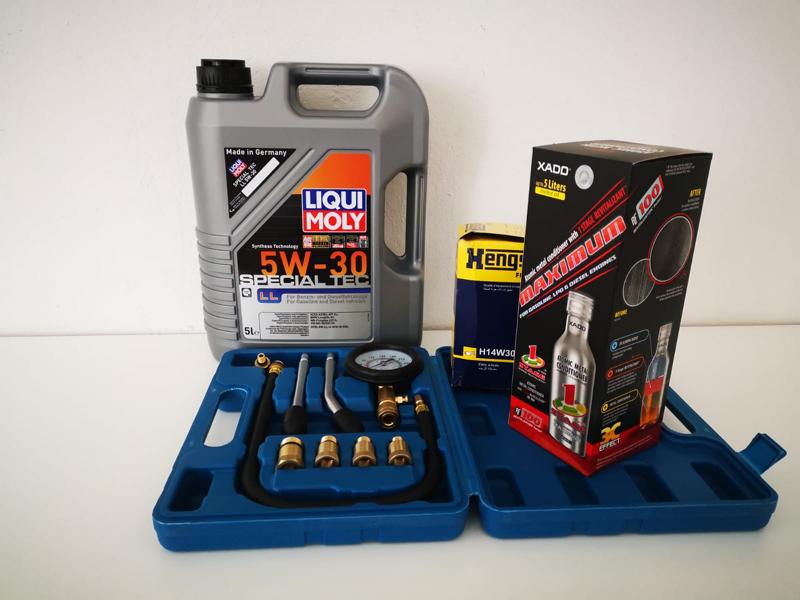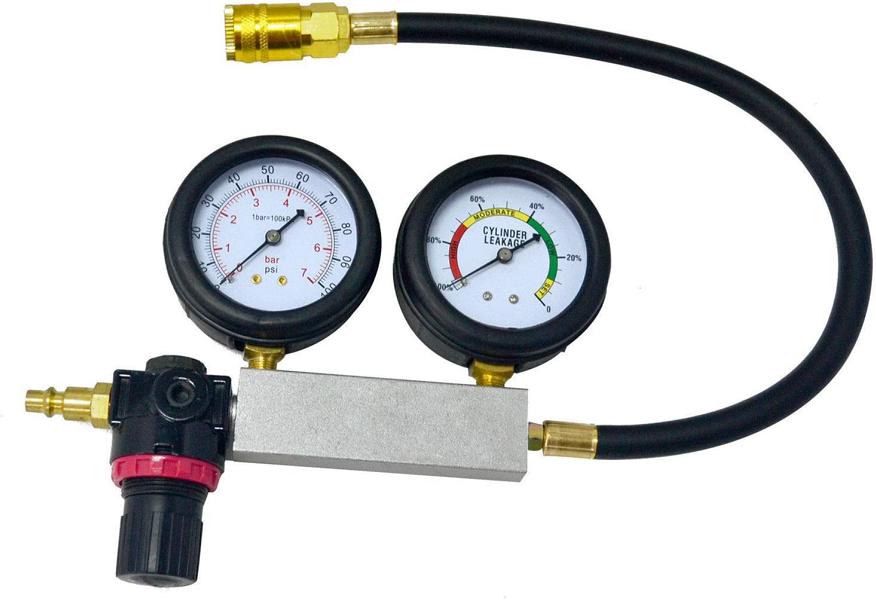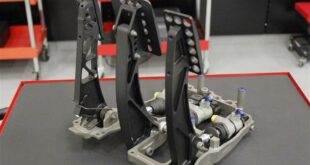Recently updated on February 7, 2022 at 12:49 am
The Compression test has always been the decisive proof of whether an engine is healthy or not. When measuring in the hole for the spark plug, its values should always be the same as possible and everything is good. (More information is available in our article "How is the compression pressure measured in the engine?“) But there is one more more precise procedurethat additional information about the wear and tear of Piston rings, Valve seats and Cylinder head gaskets gives. This procedure is called Pressure loss test. The required device is hardly more expensive than a decent one Compression tester. However, this is used to measure the pressure loss also neededto generate the pressure. The principle is simple: The crankshaft is rotated until one of the cylinders is turned at top dead center (TDC) is located. Then pressure is fed into the combustion chamber through the opening for the spark plug. First of all, the device measures how much pressure compared to the initial value has been lost and shows the value in percent on a colored scale. Everything in the range between 10 and 25 percent is in the normal range.
more than 25 percent are critical
If the pressure loss goes beyond the normal range, further tests should be done. The uniformity the values on the scale are decisive, as with the conventional compression tester. The pressure loss tester can provide informative results for further diagnosis. If the air escapes during testing, this can be heard by a hissing noise. Depending on the origin of the noise it can now be determined relatively precisely which component is damaged. When the hiss at the oil filler neck can be heard, this indicates that the piston rings are worn and therefore leaking. The air flows into the crankcase. If the noise can be heard in the intake tract, it is very likely that it is Inlet valves responsible for.
In the case of broken exhaust valves, the hissing can occur at the end of the exhaust be perceived. However, since the silencers and catalytic converters in the exhaust system suppress the noise, an open flame from a lighter on the tailpipe can provide information. If air flows through the exhaust valves, the flame will move. A damaged cylinder head gasket can be recognized by the white "clouds" that come out of the exhaust system when the engine is running. When checking the pressure loss, the damage can be seen on the rising cooling water level in the cooler.
When checking the pressure loss in the workshop, a special device (Pressure loss tester / pressure loss tester) is used. This should indicate the pressure loss on the display in percent. The setpoint is in the range between for well-running engines 8 and 10 percent. For vehicles with older engines, the range is extended up to a maximum of 15 percent.
Expiration: One of the cylinders is rotated to top dead center, blocked and filled with compressed air. The loss will in percent displayed. The test is also possible in the hobby area. But there is also a Adapter (Candle with compressed air connection), which is screwed in. The suspicious cylinder is rotated to top dead center and by means of Handbrake and gear blocked so that it remains in position during the test. The diagnosis is carried out as described above. The pressure loss may not too high be. Broken piston rings can be recognized by low air loss and if this with can be felt with a wet finger. Defective inlet valves can be diagnosed by Hissing from the open throttle. The outlet valves are defective if Air comes through the exhaust. By comparing the noise of intact cylinders, the hissing sound of the defective cylinder can often be seen directly.

Of course, that wasn't the end of it!
tuningblog has countless other articles on the subject of car and auto tuning in stock. Do you want to see them all? Just click HERE and look around. In part, we would like to provide you with news but also off the tuning. In our category Tips, products, information & Co We have reviews of car or accessories manufacturers, new ones Tuning Wiki Terms or one or the other Leak veröffentlicht. Following an excerpt of the last articles:
|
Know more, can do more, hear better: Porsche infotainment system! |
Race premiere at the DTM Trophy for Toyota Gazoo Racing Germany! |
"Tuningblog.eu" - we keep you up to date on the subject of car tuning and car styling with our tuning magazine and we present you the latest tuned vehicles from all over the world every day. It's best to subscribe to ours Feed and will automatically be informed as soon as there is something new about this post, and of course also to all other contributions.
 tuningblog.eu Your magazine about tuning the car
tuningblog.eu Your magazine about tuning the car




